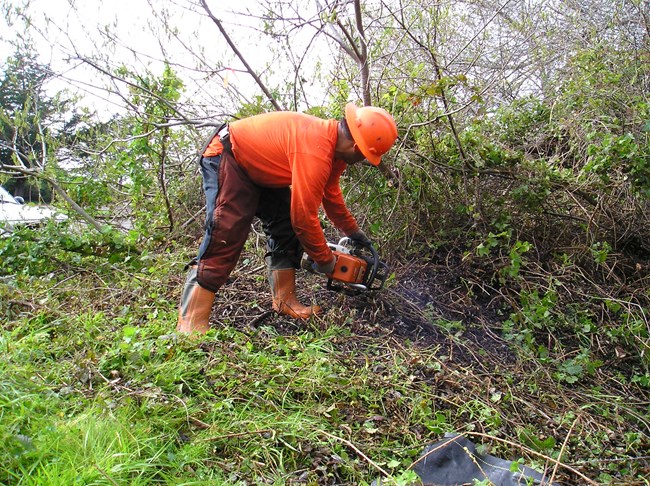
NPS photo Cape Ivy is the California coast’s biggest and baddest weed. If the Park Service had their way, we would be circulating a mug shot of this bright green vine. It is such a pain that it is the first wildland weed that the California Department of Agriculture has decided to develop a biocontrol for, it has cost so much money for land management agencies to combat it. Cape ivy currently covers 500,000 acres throughout the state! Golden Gate preserves some of the only remaining high quality coastal habitat in the country. Conservation International and The Nature Conservancy consider the California Floristic Province to be a global biodiversity hotspot: one of 25 regions worldwide where biodiversity is most concentrated and the threat of loss most severe. The San Francisco Bay area is also a United Nations Biosphere Reserve, one of 400 sites worldwide where governments, scientists, and NGOs are working together to protect critical ecosystems. Cape ivy was introduced to the eastern United States in the 1850s as a common house plant. It’s pretty yellow flowers are proof positive that looks can kill. It was introduced to California a century later in the 1950s. It is a now a serious threat to most of the western coast of North America as well as Italy and Australia. In its natural range in South Africa, Cape ivy has a relatively restricted distribution, growing in moist mountain forests. Central coastal California shares a Mediterranean climate type with only four other regions in the world: South Africa, the Mediterranean basin of Europe, Western Australia, and Chile. Crossing the world’s oceans from continent to continent through the movements of mankind, these plants have landed in areas that they never would have been able to breach on their own. In Golden Gate National Recreation Area cape ivy has invaded disturbed sites with year-round moisture, including riparian habitats along stream banks, coastal forests, and soils with a high water table. The ivy is also very good at colonizing new areas due to the fact that it can reproduce from stem fragments as small as half an inch. Carried by runoff, wildlife, or humans, it can root and grow rapidly. To illustrate the point, in 1987 there were 9 acres of Cape ivy in the Marin Headlands. In the next decade, the ivy gobbled up 67 acres! The ivy forms impenetrable mats as it climbs native shrubs and trees to form a solid layer that blocks out light and smothers other vegetation. It drapes from tree to tree, aptly nicknamed the “kudzu of the west.” Cape ivy is unsuitable forage for most wildlife due to the presence of strong chemical compounds (alkaloids and xanthones) in its leaves. It is known to be toxic to mammals and spiders, and there is some evidence that it is harmful to aquatic organisms. This monoculture of a bully plant reduces habitat for pollinators, and drastically alters bird diversity. Cape ivy most likely alters ecosystem level functions like nutrient cycling and food web dynamics as well. Currently Golden Gate and Point Reyes National Seashore to our north are working together to remove 188 acres of ivy patches in both parks. The basic plan is to first create containment lines around the patches to stop the spread. Then all vegetation in the patch must be completely removed and raked to bare ground, and tarped to compost on site. Native shrubs and trees will resprout and refill the area over time, with staff consistently following up on ivy resprouts for the next 3-5 years. Different methods have been used in removal, mainly manually or with power tools, but also employing judicious herbicide application and innovative methods such as goat grazing and prescribed fire. Staff have also monitored different treatment plots and mapped ivy areas to be contained or removed in the future. |
Last updated: February 28, 2015
